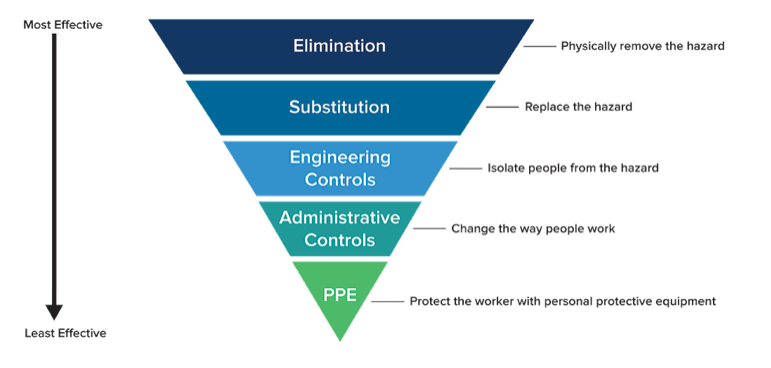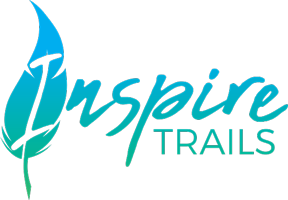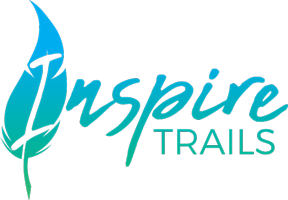Covid-19 Safety Plan
Purpose of COVID-19 Safety Plan
This COVID-19 safety plan template has been created by Inspire Horsemanship to outline the policies and procedures that have been put in place to protect Inspire Horsemanship employees, guests and others entering the business from the potential transmission of COVID-19. This plan follows the WorkSafeBC six step process for developing a COVID-19 safety plan and aligns with current Provincial Health Officer (PHO) orders and WorkSafeBC requirements.
Responsibilities
Inspire Horsemanship ownership and management are responsible for the development of this plan including ensuring that adequate resources are made available to implement and sustain the plan.
All Inspire Horsemanship employees and contractors will follow this safety plan as a condition of employment. All guests must follow this safety plan as a condition of visiting our property.
Jordan Hunt is responsible for implementing this safety plan throughout the workplace.
Employees are responsible for participating in the development, implementation and ongoing sustainment of the COVID-19 safety plan. If employees have any concerns regarding this plan they are to bring them to the attention of Jordan Hunt
STEP 1 – Identify the risks
COVID-19 is an illness (disease) caused by a coronavirus. This particular coronavirus is a new virus that was first recognized in December 2019, originating in Wuhan, China. Coronaviruses are a large family of viruses, some of which infect animals and others that can infect humans. The World Health Organization declared COVID-19 a global pandemic on March 11, 2020.
Symptoms of the disease range from mild to severe and can be fatal. Symptoms can appear up to 14 days after initial exposure and include:
- Fever
- Chills
- Cough
- Shortness of breath
- Stuffy or runny nose
- Loss of sense of smell
- Headache
- Muscle aches
- Fatigue
- Loss of appetite
The virus that causes COVID-19 spreads from person to person in several ways, including through droplets when a person speaks, coughs or sneezes, or from touching a contaminated surface before touching the face. The risk of transmission increases the closer you come to other people, the more people you come into contact with and the length of time you spend with other people. This is why it is critical to control these interactions in the workplace, to help reduce the transmission of COVID-19.
The following areas have been identified as areas where employees and/or guests may gather:
- Staff cabin
- Tack room
- Hay shelter
- Office space
The following tasks bring our employees close to one another or to guests:
- Helmet and boot fittings
- Assisting guests in mounting horses
- Guiding Trails
- Vehicle travel
The following tools, machinery and equipment have been identified as items that employees and/or guests share:
- Pens
- Tack
- Hay forks
- ATV
- Living space
- Laundry facilities
- Vehicles
The following items have been identified as high touch items:
- Gates
- Outhouse door
- Tackroom door
STEP 2 – Control the risks
The overarching aim is to reduce the risk of the virus spreading through droplets in the air and from touching a contaminated surface and then touching the face. Therefore, any controls that are adopted within the workplace should always reflect that. Different controls will offer varying levels of protection and the preferred option is always the control that offers the highest level of protection. This approach to controlling risks is referred to as the “hierarchy of controls”. This process involves assessing the risk (likelihood of harm or injury) associated with different hazards (something with the potential to cause harm or injury).
In some cases, it may be necessary to combine different levels of protection in order to control one particular risk. An example of this, in relation to managing the risk of COVID-19 transmission, is to install barriers to separate people (engineering control) and to wear a mask (personal protective equipment).
Types of risk controls

Elimination or Substitution are the highest, most effective levels of control and involve removing the risk of exposure to a given hazard entirely, or substituting a hazard for something that is less harmful.
We have implemented the following controls to limit the number of people in our workplace and to ensure physical distancing.
No guests in the staff cabin, tack room or hay shed. Helmet/boot fittings and paperwork signing outside the office, Inspire staff to open gates for guests when practicable. Guests need not use hay forks, laundry facilities, ATV or vehicles. Masks to be worn by staff and guests during horse mounting or any other situation social distancing guidelines cannot be followed. Pens to be sanitized between guest groups signing waivers. Sanitizer to be provided for use following use of outhouse.
Engineering controls include placing physical barriers between people when physical distancing cannot be maintained.
We have installed barriers in the following areas:
Guest rides will be arranged single file to utilize the length of the horses as a physical barrier
Administrative controls include the rules, training, guidelines and signage you have put in place to educate people on how to control the spread of COVID-19 in the workplace.
We have put the following administrative controls in place:
- Staff are asked to report daily if they have any symptoms. Staff live on site. Equipment sanitized between users. Guests are to wear a mask until they mount their horse and social distancing can be followed.
Personal Protective Equipment (PPE): This is the least effective option in terms of protection and should be considered if the higher levels of protection don’t allow you to adequately control the risk. PPE should be used in addition to other control measures and not in isolation.
There is an order requiring workers to wear masks in the workplace, in certain situations, including elevators, lobbies, hallways, stairwells, bathrooms, break rooms, kitchens, cafeterias, fitness facilities; and when a workplace vehicle is being used to transport more than one worker for work-related purposes.
We have put the following PPE controls in place:
- Masks are mandatory for everyone in many public indoor settings.
- Masks are required for all workers when working in common areas in buildings and when travelling in work vehicles for work-related activities, unless they are travelling alone in the vehicle
STEP 3 – Develop Policies and Procedures
Clear policies and procedures help to ensure that the identified controls are being followed within the workplace and establish the minimum requirements. They may include arrangements for who can and cannot be at the workplace, how to deal with illness in the workplace, cleaning and personal hygiene protocols, first aid provision and managing violence in the workplace.
Cleaning and Disinfection
The cleaning and disinfection of surfaces, especially high-contact surfaces, forms an important part of safe work practices for controlling COVID-19 in the workplace. Cleaning and disinfection are often referred to as a “two-stage” process. Cleaning removes visible surface dirt and debris, whereas disinfection destroys bacteria and viruses.
Garnier sanitizer for helmets, Tack Soap, Internet for SDS, undiluted, stored in tack room.
Hand washing
Regular hand washing is an important step in controlling the spread of COVID-19 in the workplace. Inspire Horsemanship employees must wash their hands when they arrive at the workplace, before and after breaks, after coughing, sneezing or touching the face, after using the washroom and before leaving work. Soap and water are preferred but hand sanitizer with a 70% alcohol base can be used when soap and water is unavailable, or as an additional control.
Daily Health Screening
All Inspire Horsemanship employees must complete a daily health declaration before entering the workplace. Daily health declarations will be tracked in a Whatsapp group chat. Employees must review the below information every day, before entering the workplace. Worker and visitor entry check posters are displayed at the office and tack room.
- Have you travelled outside Canada within the last 14 days?
- Have you been identified by Public Health as a close contact of someone with COVID-19?
- Have you been told to isolate by Public Health?
- Are you displaying any of the following new or worsening symptoms?
- Fever or chills
- Cough
- Loss of sense of smell or taste
- Difficulty breathing
- Sore throat
- Loss of appetite
- Extreme fatigue or tiredness
- Headache
- Body aches
- Nausea or vomiting
- Diarrhea
Anyone answering yes to questions 1-3 must follow the advice of Public Health and not attend the workplace. Anyone displaying any of the symptoms listed above must not attend the workplace and should call HealthLinkBC at 811 for further direction from Public Health.
Any worker that receives a positive COVID-19 test result will not be allowed to return to the workplace until they have a negative COVID-19 test result or a note from the doctor stating they are no longer infectious.
If any worker becomes ill at the worksite, they are to don a mask and report to Jordan Hun The employee will be isolated from the other employees on the worksite and arrangements will be made for them to go home.
First Aid
All Inspire Horsemanship first aid attendants must follow the WorkSafeBC Occupational First Aid Attendants (OFAA) guidelines when responding to a first aid emergency in the workplace.
Workplace Violence
The potential for violence exists whenever there is direct interaction between workers and non-workers. Employers must provide a workplace as safe from the threat of violence as possible. If there is a risk of violence in a workplace, the employer must set up and instruct workers on procedures to eliminate or minimize the risks. Some of these tendencies may be more likely to manifest when individuals are dealing with elevated levels of stress and uncertainty, consistent with a pandemic situation. Contact Jordan Hunt.
STEP 4 – Communication and Training
Everyone within the workplace must understand how to keep themselves and others safe. Training should include the need to stay at home when sick, understanding occupancy limits, hand washing procedures and who is permitted to enter the workplace. Supervisors should be trained on how to monitor workers to ensure that policies and procedures are being adhered to.
Acknowledgment of COVID-19 Safety Plan Receipt and Understanding slip below
STEP 5 – Updating the COVID-19 Safety Plan and Monitoring the Workplace
Jordan Hunt is responsible for implementing this COVID-19 safety plan throughout the workplace.
Steffyn Hunt is responsible for reviewing and updating this COVID-19 safety plan Following a workplace case of COVID-19, or whenever Provincial Health Officer orders, a “tightening” of government requirements and WorkSafeBC protocols.
STEP 6 – Ensuring Ongoing Training and Monitoring
Training on this COVID-19 safety plan will be included in all new hire orientations, or when bringing back employees following a period of absence.
This safety plan will be reviewed and revised, as required, to reflect any:
- Changes to job scope which may affect the plan,
- New areas of concern or the identification of something that isn’t working,
- Health and safety concerns raised through a worker representative or joint health and safety committee,
- Changes to Provincial Health Officer orders or other government and industry requirements that affect the plan.
Acknowledgement of COVID-19 Safety Plan Receipt and Understanding
Please read the COVID-19 safety plan and sign the acknowledgement below.
I have received, read and understand the Inspire Horsemanship COVID-19 safety plan. I will follow all aspects of the plan, including the daily health declaration. If I have any concerns regarding the plan or suggestions for improving it, I will raise them with Jordan Hunt
Contact us
Contact us today to learn more about what we offer and to book your own historical trail ride today. Reach out to us by phone or email, or complete our web form below - we will be in contact to answer your questions or complete your booking.

Get Directions
Our Google Business listing will bring you right to us. Once on the property, please follow the Inspire Trails signage.
From the Coquihalla
30 mins north of Merritt or 25 mins south of Kamloops, follow the signs west toward Logan Lake. You are now on the 97D, also known as Meadow Creek Rd. Stay on this road until you hit our drive (you will see big red barns). You will see Inspire Trails signage once on the property - please follow them.
We are the smaller red barns at the back.
From Logan Lake, the driveway is exactly 11km on your right.
Phone
250-574-1498
inspireyourhorsemanship@gmail.com
Ride Times
Ride times will vary during the season. As it gets hotter we will be going out earlier in the morning and later in the evening.
Please state a preferred time when booking your trail ride.
Important Information
We are located on a working cattle farm. If you encounter a closed gate, then please close it behind you before proceeding. If a gate is found open, then please leave it open.
The rule of thumb is “If gate is already open, leave it open. If closed, then leave it closed.”
